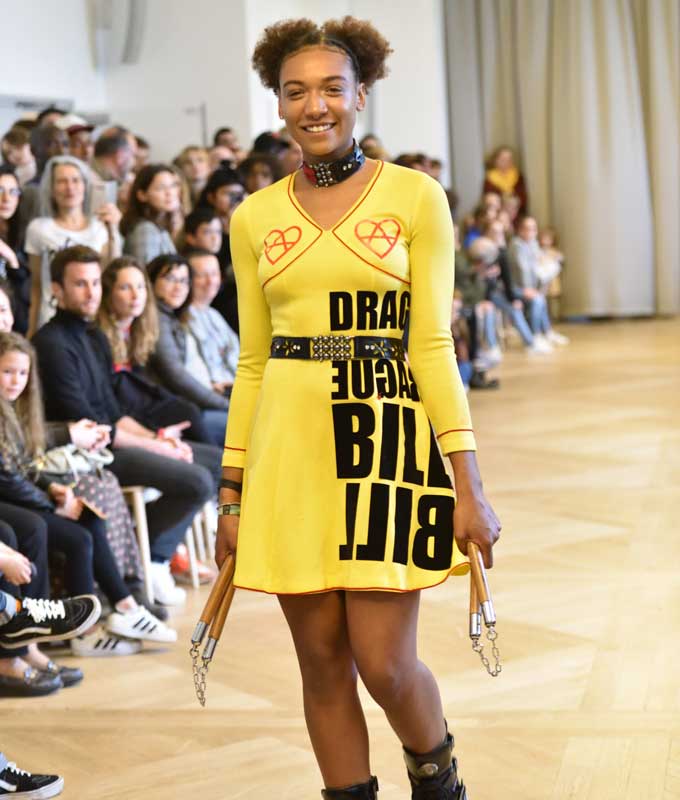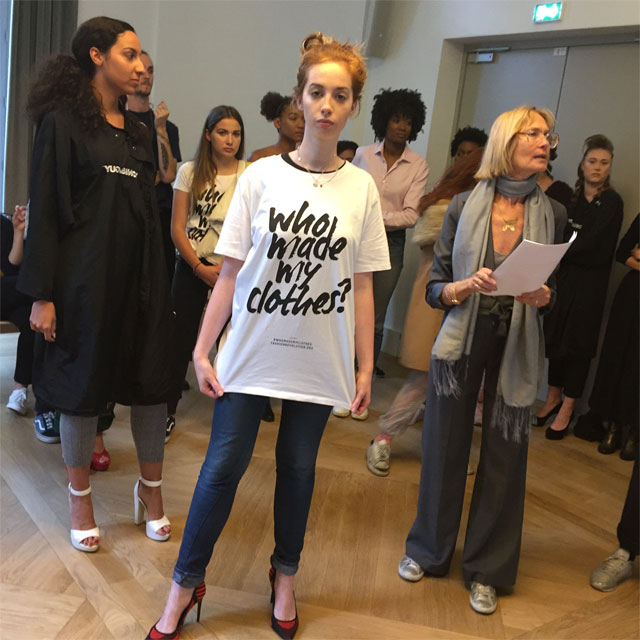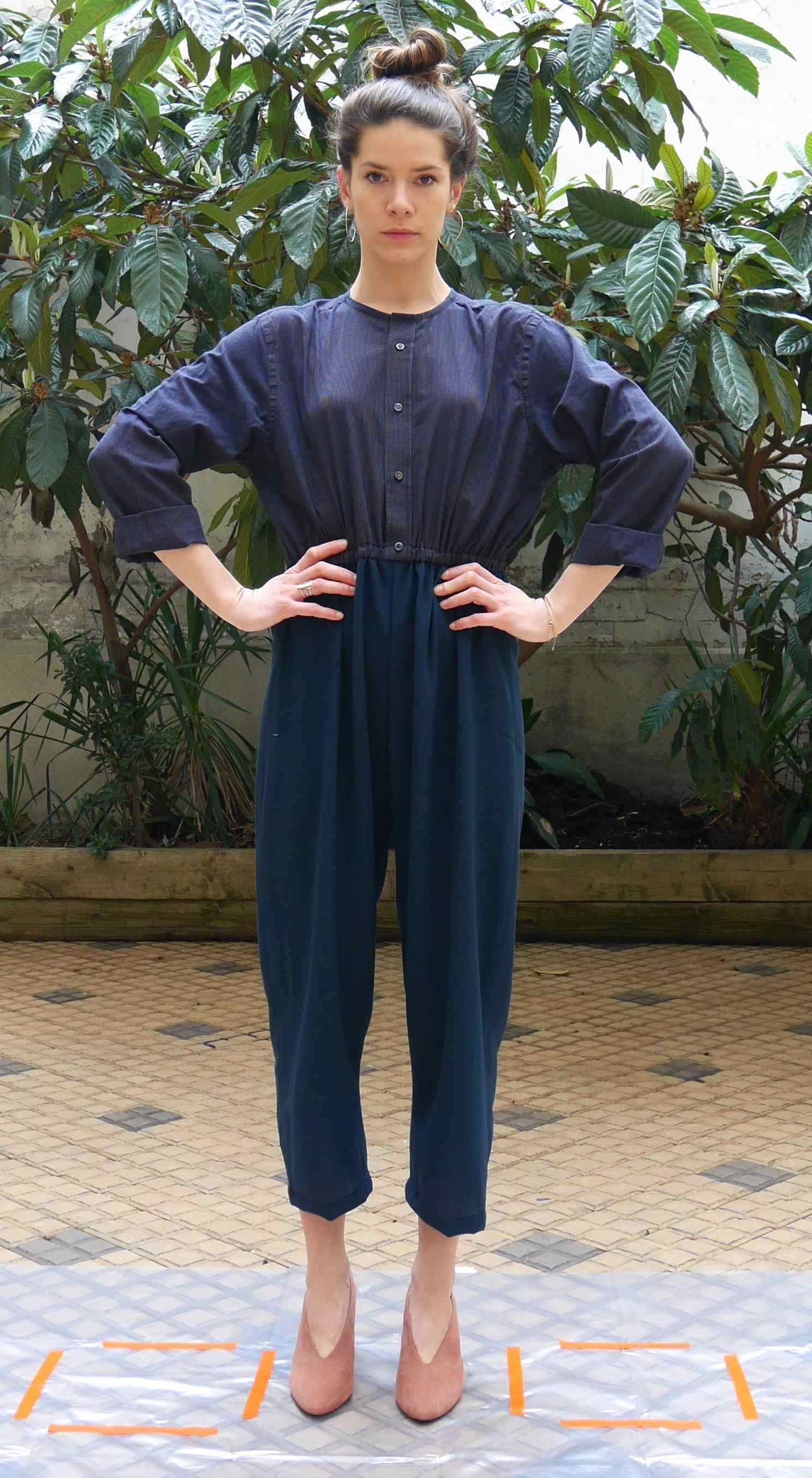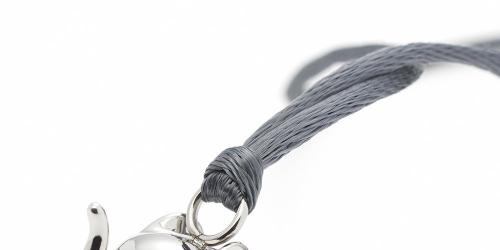Eco-friendly fashion? "It's ugly, it scratches, it's too expensive, there is not enough choice, it's hard to find, there is nothing for the rounds, it's for baba cool ... "Take the test: it is, basically, what think those who have never set foot in a shop or clicked on a green fashion site. And yet, many "consumers" as we call this committed clientele, have become aware of the consequences of "fast fashion", this ready-to-wear disposable, of poor quality, manufactured at very low cost, in workshops distant. And that is renewed more and more quickly. "Twenty years ago, distributors offered two ready-to-wear collections a year: spring-summer and autumn-winter. Today, some brands are renewing their collection, with new pieces in stores every week, so that consumers come regularly, "says Majdouline Sbai, sociologist specializing in the environment, author of" Ethical fashion is possible? " (1). As a result, our closets are full of new clothes sometimes never worn. An expensive waste, which we must admit, makes us feel guilty: "We know that what we buy is often of poor quality and produced in bad conditions," says Majdouline Sbai. In addition, it forces us to sacrifice a large budget for products that are not even worn. As for food waste. "
In any case we can not ignore it since the disaster of Rana Plaza in Dhaka in Bangladesh, a name that became infamous five years ago around the world. The collapse of this building full of textile workshops had killed 1133 people, mostly women, and more than 2,500 wounded. But fast fashion is not only dangerous for the workers who make it. "Fashion, because of its overabundance is the second most polluting industry in the world after oil extraction," says Majdouline Sbai.
Some figures that are cold in the back:
- Producing a polyester t-shirt (synthetic fiber derived from petroleum) generates 5.5 kilos of greenhouse gases, against 2.1 kilos for a cotton t-shirt (vegetable fiber).
- Jeans and its components travel an average of 65,000 kilometers, 1.5 times around the Earth. This equates to the use of 25 liters of oil. And between 7,000 and 11,000 liters of water are needed, the equivalent of 285 showers
 Dredge. Creative Rosie Browning. (Thomas Ebele / SloWeAre / Fashion Revolution France)
Dredge. Creative Rosie Browning. (Thomas Ebele / SloWeAre / Fashion Revolution France)
Every year, on the anniversary date of the Rana Plaza tragedy, Fashion Revolution Day is celebrated in more than 130 countries, including France, in eco-friendly places like the Great Neighbors waste ground and the GoodPlanet Foundation in Paris.
Parades, debates, inspiring initiatives to share on social networks ... everyone is encouraged to buy their clothes differently and to wonder about the complex process of fashion manufacturing. What path followed this jean, this little top, this dress, to get to us, from the farmer of the raw material, through the spinner, the weaver, the worker bent over his sewing machine, the carrier , the distributor ... The strong idea of the Fashion Revolution: that consumers challenge brands by demanding transparency on the composition and manufacture of their clothing. Last April, everyone was invited to choose a room in their dressing room, to make a selfie with the apparent label and to challenge the brand by posting the photo on social networks with the hashtag #WhoMadeMyClothes (who made my clothes? )
 T-shirt engaged "Who made my clothes" (who made my clothes?). Right, Isabelle Quéhé, co-organizer of the fashion revolution show (Photo Corine Goldberger).
T-shirt engaged "Who made my clothes" (who made my clothes?). Right, Isabelle Quéhé, co-organizer of the fashion revolution show (Photo Corine Goldberger).
"More and more women want to buy less, but better, and especially clothes that make sense. You can not feel good, elegant in disposable fashion. They are ready to spend more on a play they are really going to wear, keep longer, and tell a story they like from an ethical point of view, "remarks Majdouline Sbai.
The second-hand shopping market, which is booming, also participates in eco-responsible fashion: "By selling them, this lengthens the life of the clothing, and creates economic activity. If we include second-hand purchases on collaborative sites (Market Place on Facebook, vestiairecollective.com, videdressing.com, etc.) where the market continues to develop, to professionalize, it is clear that we have not then not dealing with a marginal phenomenon but with a fundamental trend that sets in, continues Majdouline Sbai. Nearly half of French women have already bought a second-hand item. By 2027, the sale of second-hand clothing will represent a higher turnover than new ready-to-wear. "
At the Fashion Revolution, we also talked a lot about "upcycling". This amounts to creating a new piece from a completely different garment, or textile waste to avoid waste.
Thus, Claire Dartigues (passed by Chloé, Christian Louboutin ...) has created a collection from New Yorker shirts, dyed with natural products. She also recently worked with the Vent de Voyage brand, which recovers boat sails to make accessories, such as the sail and linen bag shown at the fashion revolution show. "I'm still working on the idea of recovering materials to make something new. But it is important that what I create is above all modern, elegant and useful before being ethical because a product that does not interest us does not make sense even if it is eco - responsible. "For its part, Monia Sbouaï, founder of Super Marché transforms second-hand clothes to create collections assembled in sewing workshops that allow professional integration in Paris and Saint-Denis. "The idea, use existing clothes to propose a modern cloakroom manufactured in benevolent working conditions. "
 Combination, Super Market.
Combination, Super Market.
However, is eco-responsible fashion, sustainable, or "slow", the wind in its sails, and seduces fashion crazy, beyond the militant and committed consumers? Opinions are divided. "The adoption of a more ethical mode of consumption is often perceived as a punishment," says Majdouline Sbaï. Many have prejudices, and imagine immediately in combination hemp. But the offer has been enriched, and market expectations have evolved: the two trends meet, and we now find contemporary collections, in tune with the times, even if it is difficult to know the figure of global business of the sector. "
A fashion that is no longer reserved for pure and hard ecologists. Fashionistas have, of course, spotted the creations of Stella McCartney and Vivienne Westwood (first designers committed to sustainable fashion).
Eva Zingoni is one of the rare French creators of the sector coming from the royal road of fashion, - Studio Berçot, the French Institute of Fashion, and coming from luxury, via Balenciaga. It gives a second life to the unused fabrics of Parisian fashion houses, once their collections are finished. She uses fabrics of exceptional quality but also threads, buttons, closures, leather chutes that allow her to then recreate her own collections. For her, sustainable fashion will remain more or less confidential as long as it does not better meet the expectations of the general public. "There is a growing interest in eco-responsible fashion, as we saw during the Fashion Revolution in April. But the media and social media enthusiasm for the "slow fashion", sustainable, does not translate enough into commercial successes, because the ethical offer is not yet developed enough to meet the needs of active people who have need skirts suits or pants for the office, and easily washable parts. And then there is still a gap between sustainable fashion, and customer expectations in terms of style. Just because a lot of women have a green conscience does not mean they're ready to give up contemporary elegance, style, and even sexy looks, for holidays and parties. " shopping habits is a slow, intimate process. "The garment is first and foremost messages that we send to ourselves, our business card. I have often said, fashion must remain a pleasure. No way to make women feel guilty. "
Another obstacle to buying is the difficulty for novice customers to orient themselves in the green offer. The brands that could stand out, first those ready-to-wear where women already have their habits. Signs are engaged in organic cotton in small collections, the circular economy and the recycling of clothing. "But beware of" green washing "(green marketing is not very demanding on the entire production chain), warns Eva Zingoni. Especially since the younger generation is watching ... "Awareness of consumer brands, still insufficient, was born thanks to the millenials, very present and committed to social networks, not the last to denounce the abuses Nathalie Rozborski, general manager of the innovation and creation consulting company Nelly Rodi. If I were cynical, I would say that the ready-to-wear that is neither ethical nor clean now risks an uproar on social networks, and this is the only reason why brands are waking up. Otherwise they would continue to practice indecent margins by exploiting illegal workers or children. "
A trendsetter and eco-friendly addresses, Manon Quinti, creator of the Happy new green blog, notes that buying ethical fashion is not yet an obvious step: "The most frequent question asked by my readers : "I want to dress eco-responsible, but I do not know where to find the brands." "Do you have a good address to find a pretty leather jacket? I'm vegan. "" I'm looking for basic black pants for the office. Does it exist, a "Zara completely eco-responsible? Not yet, of course, but we did the experiment. We find basics and elegant and timeless pieces quickly when we are motivated.
And we will find more and more ... "Buy sustainable fashion, it's not an epiphenomenon that concerns three branches and two sores market Aligre, hammered Nathalie Rozborski. It's even an absolute prerequisite for younger generations. "The end of fast fashion? "Today we come to the end of a system," continues Nathalie Rozborski. Which does not mean that we are in deconsumption. We are not going to buy less, but differently. "For this moody of the times, some consumer brands are sometimes more engaged than designers who work for an elitist market. Like the Spanish brand Oysho , (35 stores worldwide), which uses a fiber that reuses all the water obtained from wood from sustainably managed forests. The brand also creates swimsuits, which contain recycled polyamide, obtained from used fishing nets, fabric scraps, old carpets ... "What does not prevent them from having a nice design. The eco-responsible creation is no longer just the place of some intellectuals of fashion, concludes Nathalie Rozborski. The fashion revolution, will necessarily also pass by the big signs because those who dress the mass, it is Promod, Camaïeu, Decathlon, etc, not just Stella Maccartney or Vivienne Westwood ... "
1) " Is an ethical fashion possible" . Editions rue de l'Echiquier
The eco-friendly notebook
Shops, platforms, a list (not exhaustive) of good addresses eco-responsible
- Sloweare this platform lists many addresses and brands
- Ekyog : shops all over France.
- Front de Mode : created by engaged stylist Sakina M'sa: 42 rue Volta, 75003 Paris.
- Valentine Gauthier
- Wanted Gina
- Veja , sneakers from fair trade.
- Heating blue (vegetable leather bags)
- 1083 : jeans made less than 1083 km from you, compared to 65,000 on average for classic jeans.
- Valérie Pache : wedding dresses.
upcycling
The eco-friendly fashion agenda
Roubaix: Fashion green days , the 1st Circular Fashion Forum: 24, 25 May 2018, at the ENSAI, the School of Textile Engineers.
The association Nord Créa organizes a forum dedicated to "circular" and eco-designed fashion. 600,000 tons of textiles, household linen, shoes are put on the market in France every year. Some of the textile waste is still discarded, although it could be re-used, reused or recycled depending on its state. All stakeholders in the sector are invited to present their innovations and to share their thoughts on reducing the ecological impact of textile production, fiber recycling, or the future business models of the sector.70 exhibitors, 30 conferences ...
London : Fashioned from Nature, Victoria and Albert Museum , until 27 January 2019
The exhibition, which traces four centuries of evolution in fashion, inspired by the power and beauty of nature, denounces the devastating effects of the textile industry and its impact on our environment.



